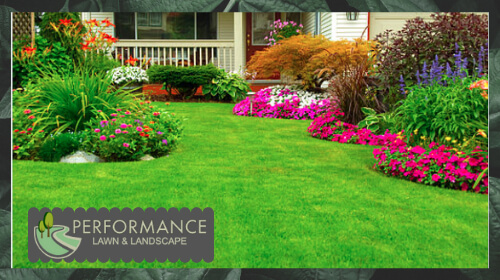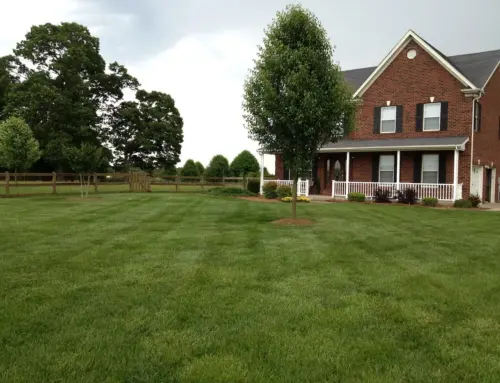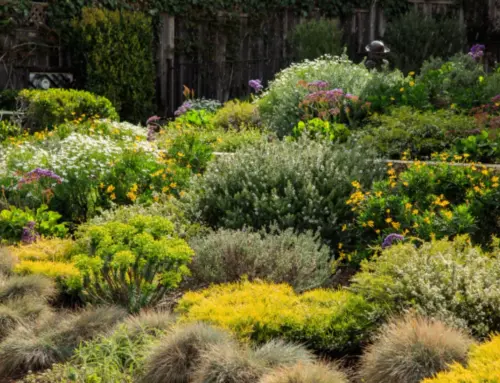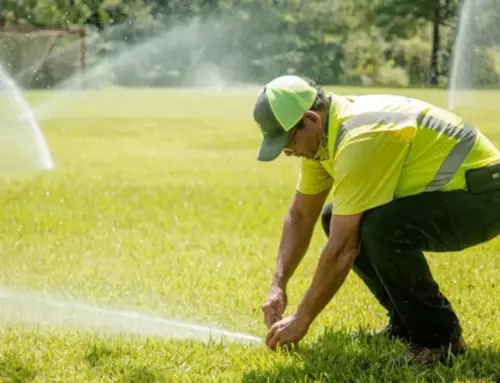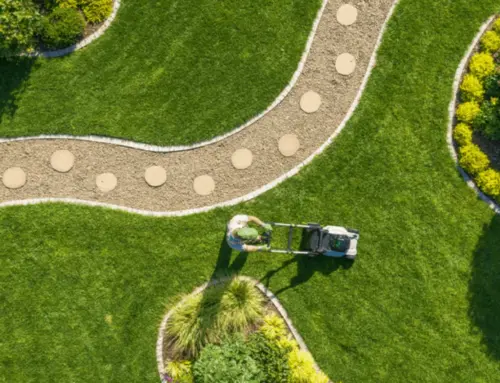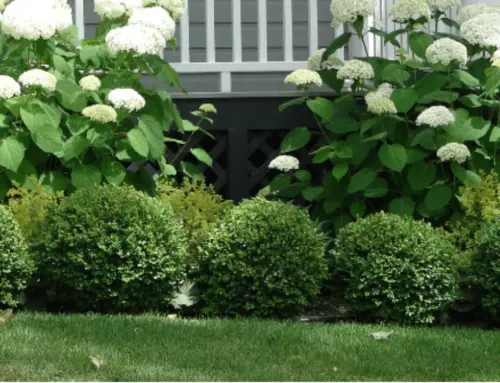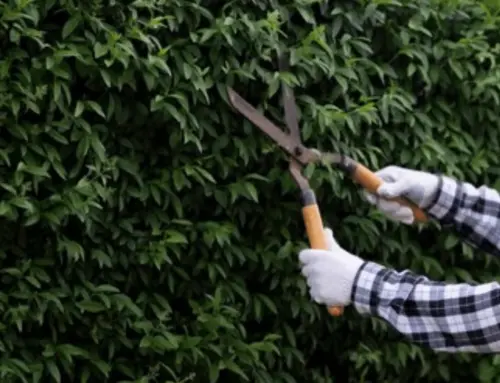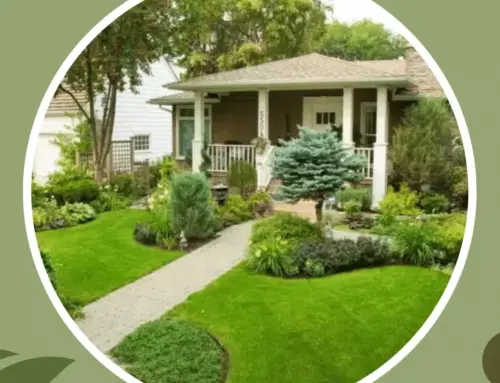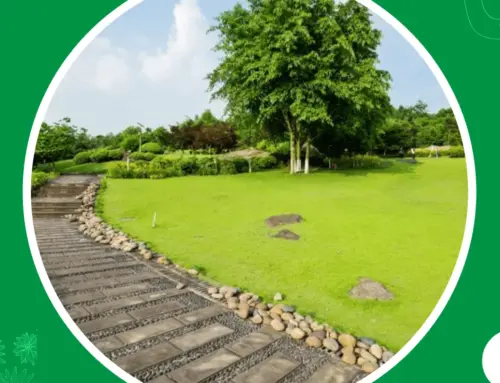Are you looking to give your outdoor area a makeover?
According to a recent survey, over 70% of homeowners prioritize having an outdoor space that feels like an extension of their home. That’s why these trends are so important; they not only add value to your property but also provide a serene and enjoyable atmosphere for you and your family.
From raised gardens and natural pathways, to modern fire pits and creative water features, find out how you can craft a unique and inviting outdoor living space. Bring your backyard to life with these inspiring landscaping ideas!
- Sustainable Landscaping
The push towards sustainability in all areas of life is set to continue in landscaping as well. Expect to see more homeowners opting for eco-friendly features like rain gardens, composting stations, and native plant choices. Incorporating sustainable practices like using solar-powered lighting and minimizing water usage will become more commonplace.
Sustainable landscaping is an approach to designing and maintaining outdoor spaces that minimizes negative impact on the environment. It involves a variety of practices and principles that work together to conserve natural resources, reduce pollution, and create a healthy and functional outdoor environment.
Here are some key elements of sustainable landscaping:
- Site Analysis and Planning
Starting with an assessment of the site’s natural features, soil, hydrology, climate, and other factors, a sustainable landscaping plan takes into account the needs of the surrounding ecosystem and the people who will be using the space. Site planning may include strategies such as preserving or restoring natural habitats, reducing water use, and using native plants to support local biodiversity.
- Efficient Use of Resources
Sustainable landscaping prioritizes resource conservation,including water, energy, and materials. This may involve using drought-resistant plant species, installing rain gardens or permeable pavement to reduce stormwater runoff, and using locally sourced materials to reduce transportation emissions.
- Soil Health
Soil is the foundation of any successful landscape, and building and maintaining healthy soils is a key component of sustainable landscaping. Practices such as composting, using organic fertilizers, and avoiding the use of pesticides and herbicides can protect the soil and encourage healthy plant growth.
- Plant Selection
Choosing plants that are well-suited to the local climate and soil conditions can reduce water and nutrient needs, as well as support local biodiversity. Native plants are especially well-suited to local ecosystems and can provide food and habitat for a variety of pollinators and other wildlife.
- Maintenance
Sustainable landscaping requires ongoing maintenance to ensure the continued health and functionality of the outdoor space. Practices such as mulching, pruning, and composting can help reduce waste and conserve resources, while avoiding the use of chemicals can protect the health of the soil and surrounding ecosystem.
Overall, sustainable landscaping is an important approach to creating outdoor spaces that are both beautiful and environmentally responsible. By prioritizing conservation and resource efficiency, sustainable landscaping can help preserve natural habitats and create healthier and more livable communities.
- Outdoor Living Spaces
Outdoor living spaces are areas in a property, usually located outside, that are designed and tailored for relaxation, entertainment, and recreation. These spaces are typically created to complement the natural landscape around them and provide a comfortable and attractive space for homeowners and their guests to enjoy the great outdoors.
Some popular examples of outdoor living spaces include patios, decks, gardens, and outdoor kitchens. These areas often feature comfortable seating, dining and cooking areas, fire pits or fireplaces, water features, and other amenities that make spending time outside more enjoyable.
Outdoor living spaces also offer significant benefits to homeowners. They increase the usable living space in a property, providing a place for entertaining guests or relaxing with family. They can also improve the value of a property, making it a desirable option for potential buyers in the future.
Creating the perfect outdoor living space requires careful planning and collaboration with landscaping professionals. Working with experienced designers and contractors can help ensure that the space is functional, comfortable, and aesthetically pleasing.
- Edible Landscaping
More and more people are interested in growing their own food, and landscaping is the perfect way to do it. In 2023, we’ll see more homeowners choosing to incorporate edible plants into their landscapes.
Edible landscaping is the practice of planting fruits, vegetables, and herbs in a way that is both beautiful and functional. It is a great way to grow your own food while also enhancing the look and feel of your yard. Here are some things to keep in mind when starting your edible landscaping project:
- Consider Climate and Soil Conditions: It is important to grow plants that are well-suited for your local climate and soil. When selecting plants, make sure to research which ones will thrive in your area.
- Mix It Up: Just like with traditional landscaping, mixing up plant varieties will add visual interest and prevent the spread of pests. Planting different varieties of fruits and vegetables will also help keep pests from wiping out your entire crop.
- Choose the Right Layout: Think carefully about the layout of your garden. Consider the amount of sun and shade each plant needs, as well as how much space they require. You can use raised beds or container gardens for a smaller space, or consider using vertical gardening techniques.
- Make it Beautiful: Edible landscaping doesn’t have to sacrifice aesthetic appeal. Choose plants with different colors and textures that can be arranged in an attractive design. Incorporate paths, seating areas, and decorative elements like trellises and garden art.
- Consider Companion Planting: Companion planting involves planting different plants together that benefit each other in some way. For example, planting beans with tomatoes can help fix nitrogen in the soil, benefiting both plants. Research companion planting pairs and consider incorporating them into your edible landscaping design.
- Plan for Seasonal Changes: Consider planting a variety of fruits and vegetables that will produce at different times of the year. This will ensure that you have a continuous supply of fresh produce throughout the growing season.
Edible landscaping is a great way to enjoy fresh, home-grown produce while enhancing the beauty of your yard.
- Low-Maintenance Landscaping
With our busy lifestyles, many homeowners are looking for landscaping options that require minimal upkeep. Low-maintenance landscaping is a style of gardening and landscaping that prioritizes simplicity, sustainability, and minimal upkeep. It involves using plants and design elements that require minimal water, pruning, and fertilizing, and that can thrive in a variety of climates and conditions.
This trend has gained popularity in recent years due to a variety of factors, including a growing awareness of the need for sustainable living practices, a desire for more free time, and a need for cost-effective landscaping solutions. With low-maintenance landscaping, homeowners can enjoy the beauty of nature without sacrificing time, resources, or money.
Some common elements of low-maintenance landscaping include using native plants that are adapted to the local climate and require less water and care, incorporating drought-resistant plants like succulents and cacti, and using mulch and other natural materials to help retain moisture and prevent weed growth.
In addition, low-maintenance landscaping often involves thoughtful design elements like hardscaping, or the use of features like rocks, gravel, and pathways that require little to no upkeep.
Overall, low-maintenance landscaping is a trend that offers numerous benefits, both practical and aesthetic. By reducing watering and trimming needs, it can help save time and resources while creating a beautiful, natural environment that can be enjoyed year-round.
- Smart Landscaping
Thanks to advancements in technology, landscapers can now incorporate smart features like automatic irrigation systems, weather sensors, and outdoor lighting controlled by apps. Homeowners can now control all aspects of their landscape from their phones, making it easier to maintain and manage.
Smart landscaping also considers factors such as soil type, sun exposure, and water availability to create a beautiful and functional outdoor space that is in harmony with the surrounding environment.
By adopting smart landscaping practices, homeowners and property managers can create an attractive and low-maintenance outdoor space that benefits both people and the planet.
Professional Landscaping for Best Results!
Give your outdoor space the upgrade it deserves with these modern and sophisticated landscaping trends. Whether you’re looking for a classic design or something more modern, our guide will help you make the right decision and have a landscape you won’t want to leave.
Talk to us at Performance Lawn & Landscape to get started!

